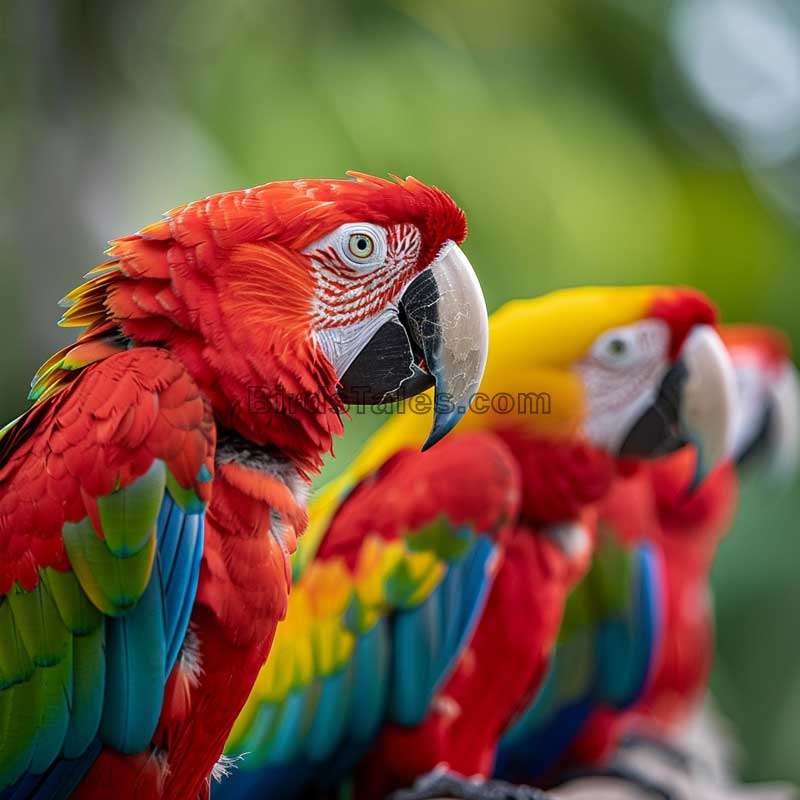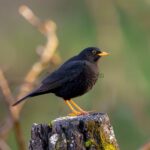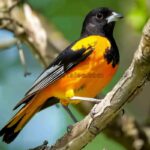Types of Parrots
Parrots are a varied bunch.
They range from tiny budgerigars to grand macaws.
These birds are colorful, intelligent, and full of personality.
Their types reflect their diverse habitats and behaviors.
Popular Pet Parrot Species
- Budgerigar (Budgie): Small, friendly, and easy to care for. They are colorful and can learn to talk.
- Macaw: Large, vibrant, and social. They need a lot of space and interaction.
- Cockatiel: Medium-sized, playful, and good at mimicking sounds.
- African Grey: Highly intelligent and excellent mimics of human speech. They require mental stimulation and interaction.
Budgerigar (Budgie): Small and lively.
Budgies are great for beginners.
They come in green, blue, yellow, and white.
Budgies are social, enjoy company, and can learn simple words.
Macaw: Macaws are big and bold.
They boast vibrant feathers in a rainbow of colors.
These birds are quite the talkers and can learn tricks.
They need large cages and plenty of attention.
Their size can be intimidating, but they are gentle giants.
Cockatiel: With a crest on their head and rosy cheeks, cockatiels are charming.
They whistle tunes and can mimic simple sounds.
Cockatiels thrive on interaction and love to perch on shoulders.
African Grey: Known for their smarts, African Greys can mimic speech like no other.
They need mental stimulation and plenty of social time.
These birds can form strong bonds with their owners.
Their feathers are mostly grey, but they have striking red tails.
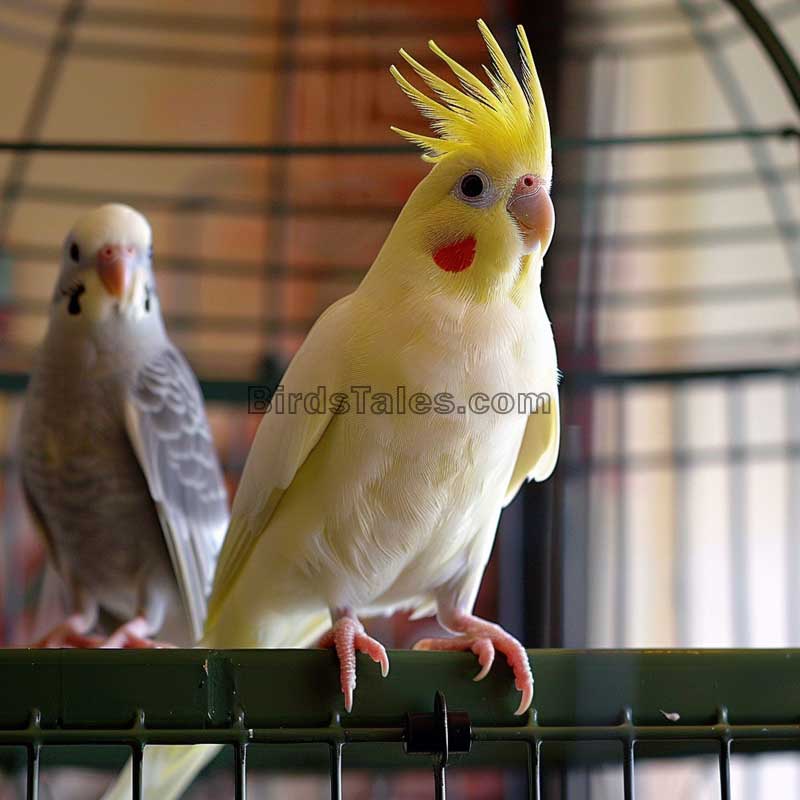
Ducks are diverse birds known for their swimming skills and webbed feet. Found worldwide, except in Antarctica, they thrive in…
Exotic Parrot Species
- Lories and Lorikeets: Known for their bright colors and unique diet of nectar and pollen.
- Kea: Only alpine parrot, found in New Zealand. They are curious and intelligent.
- Kākāpō: Large, nocturnal, and flightless. They are critically endangered and found only in New Zealand.
Lories and Lorikeets: These parrots are nectar lovers.
Their tongues are brush-tipped for sipping nectar.
Colors are dazzling: reds, greens, blues, and yellows.
They need special diets and lots of care but are very playful.
Kea: Found in New Zealand’s mountains.
Keas are the world’s only alpine parrots.
They are curious and mischievous.
Keas are known for their green feathers tinged with orange underwings.
They enjoy solving puzzles and exploring.
Kākāpō: Critically endangered and nocturnal.
Kākāpōs are large and flightless, residing in New Zealand.
They have green and yellow mossy feathers.
Conservation efforts are crucial for their survival.
They have a distinctive, owl-like face.
Parrot Care Essentials
Caring for a parrot is a serious commitment.
They are social, intelligent, and require proper attention.
Providing the right diet, housing, and enrichment is key to their well-being.
The common blackbird (Turdus merula) is a widespread songbird known for its distinct appearance and melodious song. Found across Europe,…
Balanced Diet for Parrots
- Pellets: Main food source, providing balanced nutrition.
- Fruits and Vegetables: Fresh produce for variety and vitamins.
- Occasional Seeds: Treats rather than a staple, due to high fat content.
Parrots need a varied diet to stay healthy.
Pellets should make up the bulk of their diet.
These provide balanced nutrition.
Fresh fruits and vegetables are vital.
Think apples, carrots, spinach, and berries.
Avoid avocado and chocolate – these are toxic.
Seeds can be given, but sparingly.
They are high in fat and should not be the main food.
Nuts are also good treats but should be limited.
Water should be fresh and clean, changed daily.
For nectar-eating parrots like lorikeets, provide special nectar mixes.

Ideal Housing and Cage Setup
- Cage Size: Should be large enough for the parrot to spread its wings.
- Perches: Different sizes and textures to keep feet healthy.
- Toys: For mental stimulation and to prevent boredom.
- Clean Environment: Regular cleaning to prevent disease.
A parrot’s cage is its castle.
It should be spacious enough for the bird to spread its wings.
Vertical bars are important for climbing.
Inside the cage, place several perches of different sizes and textures.
This helps keep their feet healthy.
Toys are crucial.
They prevent boredom and provide mental stimulation.
Think of chew toys, bells, and puzzle toys.
The cage must be kept clean.
Dirty cages can lead to diseases.
Place the cage in a lively part of the house.
Parrots are social and enjoy being part of the action.
Avoid placing the cage in drafty areas or direct sunlight.
Ducks are diverse birds known for their swimming skills and webbed feet. Found worldwide, except in Antarctica, they thrive in…
Social Interaction and Enrichment
- Interaction: Parrots are social and need daily interaction.
- Enrichment Activities: Puzzles, foraging toys, and training sessions.
- Bonding: Spend time with your parrot to build a strong relationship.
Parrots are social butterflies.
They thrive on interaction and companionship.
Daily social time is a must.
This can be talking to them, playing, or training sessions.
Lack of social interaction can lead to loneliness and depression.
Enrichment is not just toys.
It includes activities that challenge their minds.
Rotate toys regularly to keep things fresh.
Foraging toys, where parrots have to find their food, are excellent.
Training sessions are great for bonding and stimulation.
Teach them tricks, words, or simple games.
Bonding is key.
Spend quality time with your parrot daily.
This builds trust and a strong relationship.
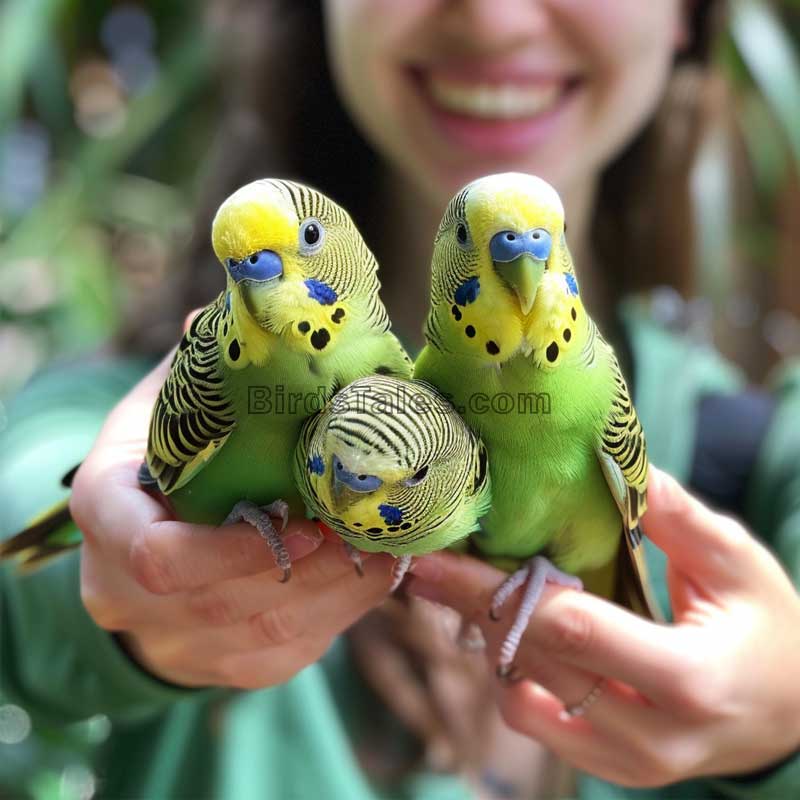
Unique Traits and Behaviors
Parrots are fascinating creatures with unique traits and behaviors.
Their vibrant feathers, strong beaks, and zygodactylous feet are just the beginning.
These birds are known for their intelligence, social nature, and ability to mimic sounds.
Understanding their behaviors helps in providing better care and companionship.
Parrot Communication and Mimicry
- Vocalizations: Parrots communicate through sounds and body language.
- Mimicry: They can imitate human speech and other sounds, which is both entertaining and a sign of their intelligence.
Parrots are masters of communication.
They use a mix of vocalizations, body language, and mimicry to express themselves.
A happy parrot might puff up its feathers and bob its head.
In contrast, a scared parrot might hiss or lunge.
Mimicry is perhaps their most famous trait.
Parrots can imitate a wide range of sounds, including human speech.
This ability stems from their complex vocal anatomy.
The syrinx, located at the base of their trachea, allows them to produce diverse sounds.
African Greys and Amazon parrots are particularly known for their speaking abilities.
They don’t just repeat; they often understand the context of words.
Imagine a parrot calling your dog by its name – it’s amusing and shows their cognitive skills.
Intelligence and Playfulness
- Learning Tricks: Parrots can be trained to perform tricks.
- Problem Solving: They enjoy solving puzzles and playing with interactive toys.
- Play: Play is essential for their mental and physical health.
Parrots are not just talkers; they are thinkers too.
Their brains are proportionately large for their body size, which supports high levels of cognition.
Parrots can solve puzzles, learn tricks, and even use tools.
Kea parrots are famous for their problem-solving skills.
They can unlock cages, open latches, and dismantle objects.
Playfulness is in their nature.
Parrots love to play with toys, explore their surroundings, and interact with their owners.
This play is crucial for their mental health.
Without enough stimulation, parrots can become bored and develop destructive behaviors.
Training sessions can be a fun way to engage with your parrot.
Simple tricks like “step up” or “wave” can be taught using positive reinforcement.
Not only does this provide mental stimulation, but it also strengthens the bond between you and your feathered friend.
Lifespan and Health Care
Parrots have impressive lifespans.
Small species like budgerigars can live up to 15 years, while larger parrots, like macaws and cockatoos, can live up to 80 years or more.
Their long lifespan means they require long-term commitment and care.
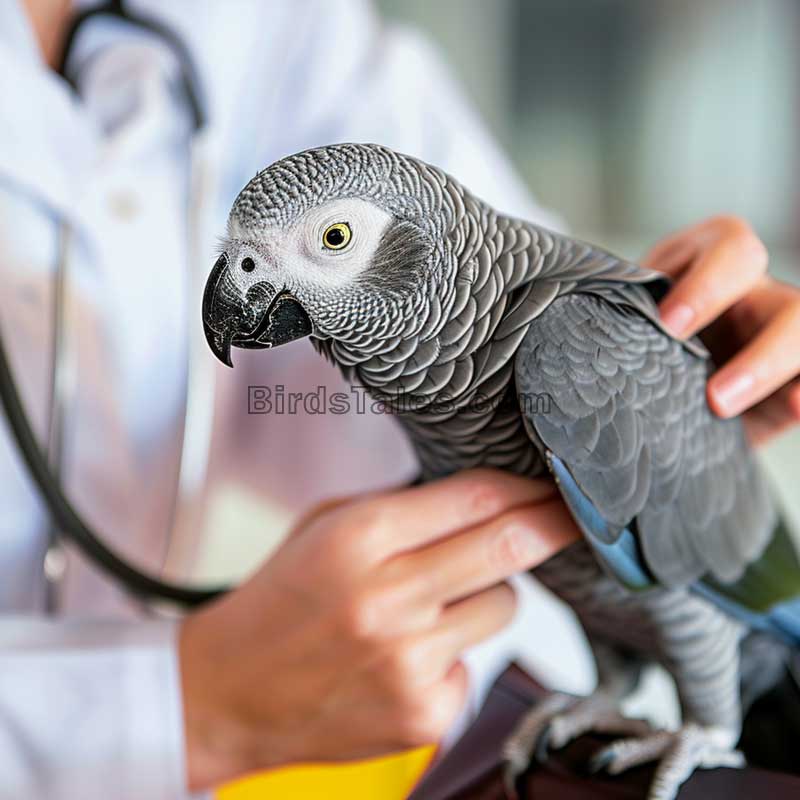
Common Health Issues
- Psittacine Beak and Feather Disease (PBFD): A viral disease affecting feathers and beak.
- Prevention: Regular vet check-ups and a clean environment.
- Treatment: Early detection and proper care can manage many health issues.
Parrots, like all pets, can face health problems.
Psittacine Beak and Feather Disease (PBFD) is a serious viral infection that affects their feathers and beak.
Symptoms include feather loss, beak deformities, and reduced immune function.
Early detection is key to managing this disease.
Regular vet check-ups can help spot issues early.
Other common health issues include respiratory infections, caused by poor ventilation or dusty environments, and nutritional deficiencies, often resulting from an unbalanced diet.
Parrots need a varied diet rich in vitamins and minerals to stay healthy.
Importance of Veterinary Care
- Regular Check-ups: Essential for early detection of health problems.
- Avian Veterinarians: Specialists in bird health who can provide the best care.
Regular veterinary care is crucial for keeping your parrot healthy.
Avian veterinarians specialize in bird health and can provide the best care.
Annual check-ups help detect problems early and ensure your parrot is in good health.
During a vet visit, the vet will check your parrot’s weight, feather condition, beak, and nails.
They may also run tests to check for diseases or nutritional deficiencies.
Establishing a relationship with an avian vet can provide peace of mind and help you provide the best care for your feathered friend.
Conservation and Habitat Loss
Parrots face numerous challenges in the wild.
Habitat loss, illegal trade, and competition from invasive species threaten their survival.
Conservation efforts are crucial to protect these beautiful birds.
Threats to Parrots
- Deforestation: Loss of habitat due to logging and agriculture.
- Hunting: Parrots are hunted for food and the pet trade.
- Illegal Pet Trade: Capturing wild parrots for sale as pets.
Habitat loss is the biggest threat to parrots.
Deforestation for agriculture, logging, and urbanization destroys their natural homes.
Without trees, parrots lose their nesting sites and food sources.
Hunting is another threat.
Parrots are often hunted for their feathers, meat, or to be sold as pets.
The illegal pet trade is a significant issue.
Wild parrots are captured and sold, leading to population declines.

Conservation Efforts
- Habitat Protection: Efforts to preserve natural habitats.
- Organizations: Groups like the World Parrot Trust work to protect parrots.
- Community-Based Conservation: Involving local communities in conservation efforts.
Conservation efforts are in place to protect parrots and their habitats.
Organizations like the World Parrot Trust work to conserve parrot species through research, habitat protection, and education.
Community-based conservation involves local communities in protecting parrot habitats.
Legal protections, such as CITES (the Convention on International Trade in Endangered Species of Wild Fauna and Flora), regulate the trade of wild parrots.
Efforts also include creating artificial nesting sites to replace lost habitats.
For example, in areas where natural nesting hollows are scarce, conservationists provide nesting boxes to boost breeding success.
Education campaigns raise awareness about the threats parrots face and promote sustainable practices.
Conclusion
Key Points:
- Parrots need a balanced diet, suitable housing, and social interaction.
- They are intelligent and can mimic sounds and solve problems.
- Conservation efforts are essential to protect parrots in the wild.
Considerations for Parrot Owners:
- Parrots require significant attention and care.
- Research thoroughly before getting a parrot to ensure you can meet its needs.
Parrots are incredible creatures with unique traits and extensive care needs.
Their intelligence and social nature make them fascinating companions, but they require a long-term commitment.
Proper diet, housing, and social interaction are essential for their well-being.
Understanding their behaviors, health needs, and conservation challenges helps in providing the best care and contributing to their protection in the wild.
If you are considering getting a parrot, ensure you are prepared for the responsibility and capable of providing a loving, stimulating environment for these remarkable birds.
By supporting conservation efforts, we can help ensure that future generations can enjoy the beauty and companionship of parrots.
Parrots are not just pets; they are lifelong companions and deserve the best care we can provide.
